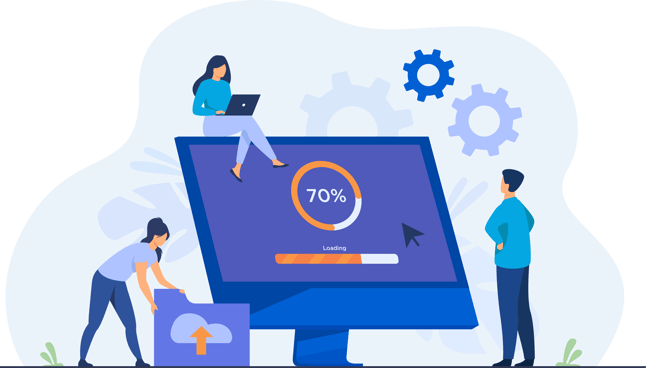Migrating to the cloud can do a lot of good things for your Not-for-Profit (NFP) organisation. It strengthens your staff’s productivity and enables workplace flexibility. However, it could also create problems if not planned properly and executed accurately. This can also be the case if you’re using a cloud ad hoc service.
For most of the time, businesses and organisations go for a cloud-based approach without first consulting with their IT staff or a managed cloud service provider. This ends up creating a multitude of problems such as data redundancy, data mismanagement, or worse, an unsecured environment.
The best way for your business to get the most out of the cloud is to tackle it the right way from the start to prevent potentially expensive problems in the future.
To help you do so, we have gathered five things you should know before migrating your NFP to the cloud or establishing a strong IT environment for your NFP.

Why are you migrating to the cloud?
The most common reasons NFP organisations migrate to the cloud are to reduce IT costs, establish a remote working environment, create secure and reliable IT, and improve staff productivity.
Knowing what you want out of the cloud means you can plan your migration towards achieving your business goals. You can set which priorities are higher and lower and figure out a migration plan for it.
For instance, if you want to prioritise remote working because you’re trying to establish a secure and convenient hybrid working environment, then your cloud migration plan should focus on building a secure remote network where staff can access files anywhere online.
What does your Not-for-Profit want from the cloud?
Now let’s get more specific.
The sky’s the limit when it comes to the cloud. As much as we want all the benefits from this technology, a smart NFP organisation should have a clear view of what they want to achieve after migrating to the cloud.
Exactly which parts of your business or IT do you want to migrate?
Your answer is important as it will help you determine the expected outcomes and how much you’ll be investing for the migration. For example, setting up a remote working environment using Microsoft 365 would have a different migration plan from cloud backup and recovery.
Simply saying, a cloud migration strategy with a clear view of business needs will create a smoother transition process.

How do you plan to migrate your Not-for-Profit to the cloud?
Plan your cloud implementation strategy according to your current IT environment so you can examine how much work it takes to upgrade your current system to a cloud-based one and plan accordingly.
Start with the applications you want to migrate to the cloud, especially your aged legacy systems. If your not-for-profit organisation is using legacy systems or a custom-built one, cloud migration might be too challenging, expensive, or downright impossible. This can be a great opportunity to look for other cloud-based systems that you could use instead.
We recommend that you plan your cloud migration with an IT partner or a Managed Service Provider. Specifically, ones that have experience and success working with cloud migrations in your industry. They should be able to help you examine specific organisational system needs, and provide ROI analysis, and cost and deployment expectations.
If you don't know where to start, you can sign up for a free IT health and security check and we'll show you the current state of your IT, the risks you're exposed to, and how to mitigate them.
How would you maintain your NFP's new cloud environment?
The cloud is a versatile environment. Rather than investing too much time and resources on updates, hardware costs, in-house IT infrastructure, and data centres, the cloud will do it for you. To top it off, the cloud even offers reduced costs that would enable you to shift your extra IT expenses to support your mission.
Once your NFP has switched to the cloud, your views on maintaining your cloud environment will also switch. You’re now more likely to focus on your NFP’s goals and rest well knowing that your cloud environment supports them.
Take note that organisational pipelines and departmental needs may change over time. That’s why it’s essential that your cloud environment should always be up to date with your NFP’s structure to prevent any unexpected surprises in your cloud software subscriptions.
Although cloud environments are much easier to maintain compared to on-premise IT systems, it still need continuous management and monitoring because as your NFP grows, your IT also grows.

Are you ready to migrate your NFP to the cloud?
The cloud has provided a plethora of benefits to not-for-profit organisations worldwide. The most notable is it reduced overall IT costs and optimised staff productivity. The only downside is it has a delicate migration process. But with the right strategy, execution, and maintenance, will help you with your mission tremendously.
With the number of not-for-profit organisations worldwide shifting to the cloud, it’s only a matter of time before you’ll have to migrate as well. Sticking to unsecured IT systems and legacy applications not only poses risks to your NFP’s data but limits your potential to help those in need. To start your journey towards a proactive IT environment, book a free IT Health and Security Assessment today!








.jpg)



